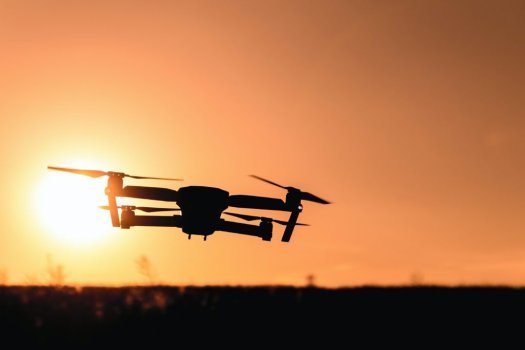K
Kathleen Martin
Guest
The practical application for Unmanned Aerial Vehicles (UAVs), better known as drones, in the agriculture sector has been expanding at a steady rate. Experts predict that drones are going to make the agricultural sector more efficient than ever before. According to a study conducted by Informa Economics and Measure, farmers could save an estimated $1.3 billion annually by using these aerial devices to increase crop yield and reduce input cost. With the improved drone technology, the agriculture business can drastically change and this has been proven by farms that have embraced it. Here’s how drones can change the agriculture business based on facts.
Health Assessment
It is essential to assess crop health in order to control pathogens that may damage your crops. Drones carry devices that scan crops using both visible and near-infrared light. These devices detect the plants that reflect the different amounts of NIR light and green light thus producing multispectral images that indicate their health. Discovering these diseases as soon as possible enables farmers to look for a precise remedy.
David Schmale, a Virginia-based farmer and scientist who runs the Schmale Laboratory at Virginia Tech, uses drones to track down pathogens before they even land. He has managed to capture the airborne fungus of Fusarium graminearum which is a great threat to wheat and corn and can travel hundreds of kilometers. He also uses air sampling whenever he discovers pathogens in a neighboring country.
Crop Monitoring
Vast field assessment is the biggest obstacle in farming as it takes a lot of time and manpower. Drones can remedy this, take stock, and inspect for slow-growing crops among other problems. To produce color contrast images that highlight these problems, drones have sensors that measure wavelengths of light that are absorbed and reflected by crops. The images produced include Normalized Difference Vegetation Index (NDVI). These drone sensors can not only tell apart crops, soil, and forest but also sick plants since they reflect light differently.
To make the monitoring process even more effective, many farmers are in favor of combining drones with the use of heavy machinery. In other words, combines, tractors and other robust farming equipment can still be very useful when assessing crops. One important detail to pay attention to however, is functionality. Besides a smooth running engine, assessing the state of your rubber tracks is also important before going out on the field.
Continue reading: https://trendingnewsbuzz.com/how-drones-can-change-the-agriculture-industry/
Health Assessment
It is essential to assess crop health in order to control pathogens that may damage your crops. Drones carry devices that scan crops using both visible and near-infrared light. These devices detect the plants that reflect the different amounts of NIR light and green light thus producing multispectral images that indicate their health. Discovering these diseases as soon as possible enables farmers to look for a precise remedy.
David Schmale, a Virginia-based farmer and scientist who runs the Schmale Laboratory at Virginia Tech, uses drones to track down pathogens before they even land. He has managed to capture the airborne fungus of Fusarium graminearum which is a great threat to wheat and corn and can travel hundreds of kilometers. He also uses air sampling whenever he discovers pathogens in a neighboring country.
Crop Monitoring
Vast field assessment is the biggest obstacle in farming as it takes a lot of time and manpower. Drones can remedy this, take stock, and inspect for slow-growing crops among other problems. To produce color contrast images that highlight these problems, drones have sensors that measure wavelengths of light that are absorbed and reflected by crops. The images produced include Normalized Difference Vegetation Index (NDVI). These drone sensors can not only tell apart crops, soil, and forest but also sick plants since they reflect light differently.
To make the monitoring process even more effective, many farmers are in favor of combining drones with the use of heavy machinery. In other words, combines, tractors and other robust farming equipment can still be very useful when assessing crops. One important detail to pay attention to however, is functionality. Besides a smooth running engine, assessing the state of your rubber tracks is also important before going out on the field.
Continue reading: https://trendingnewsbuzz.com/how-drones-can-change-the-agriculture-industry/

